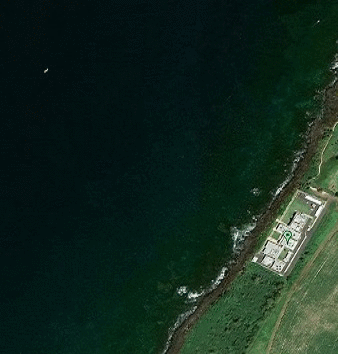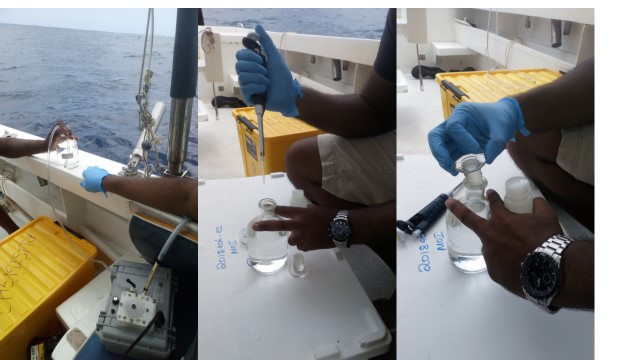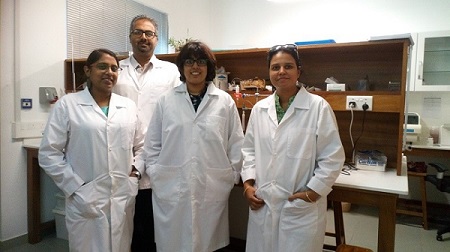Oceanic Carbonate Chemistry Observatory


Time series data of pH in total scale, atmospheric partial pressure of carbon dioxide (pCO2), dissolved carbon dioxide (CO2), bicarbonate ion concentration (HCO3-) and carbonate ion concentration (CO32-). Data generated is updated quarterly.

The Observatory
The observatory generates accurate data on patterns and trends in ocean acidity related to changes in atmospheric carbon dioxide. It will also help to understand the amount of dissolved carbon dioxide in the ocean and the changes of marine carbonate chemistry over time.

Trends and Patterns
In a global effort to understand the trends and patterns in ocean acidity through the setting up of ocean acidification observatories, the Mauritius Oceanography Institute and the University of Mauritius have each been awarded a “GOA-ON (Global Ocean Acidification-Observing Network) in a Box” monitoring kit by The Ocean Foundation. Since July 20018, MOI has initiated a monitoring program at an offshore station in Albion. This initiative directly addresses the UN SDG 14:
- Target 14.3 Minimize and address the impacts of ocean acidification, including through enhanced scientific cooperation at all levels
- Indicator 14.3.1 Average marine acidity (pH) measured at agreed suite of representative sampling stations
Sampling Protocol
Water samples are collected at 1.5 m depth and poisoned using a saturated solution of mercury chloride as recommended by Standard Operating Procedure 1 (Dickson et al. 2007). Additional samples are collected and filtered using a 0.2 micron pore size filtration device for nutrient analysis.

In-situ observations and measurements
The sea conditions as well as the prevailing meteorological conditions are recorded. In-situ measurements include salinity and temperature data (CTD Diver VanEssesn) and dissolved oxygen (DYI).
Analytical Procedures
To determine the carbonate system, pH and Total Alkalinity are measured using the GOA-ON kit. pH is measured by spectrophotometric determination of m-cresol purple dye according to Standard Operating Procedure 6b (Dickson et al. 2007). Total alkalinity is measured by open cell acid titration as adapted from Standard Operating Procedure 3b (Dickson et al. 2007).
Nutrient content is determined using standard procedures on an automated nutrient analyzer (Systea EasyChem).
Data Interpretation
Salinity, temperature, pH, total alkalinity and nutrient data generated are used to determine the carbonate system through the CO2sys.xls calculator (Pelletier et al. 1998).
OA Team MOI

Anishta Audit-Manna, Dr. Yashvin Neehaul, Dr. Reeya Oogarah, Dr. Danishta Dumur-Neelayya (from left to right)
Acknowledgements
The Ocean Foundation and the Global Ocean Acidification Observing Network are acknowledged for the support provided to MOI and UoM in the setting up of the observatory. The Western Indian Ocean Marine Science Association is acknowledged for funding the running of the surveillance programme.

Request for data should be addressed to the Director of the Mauritius Oceanography Institute at director@moi.intnet.mu.
References
(1) Dickson, A.G., Sabine, C.L. and Christian, J.R. (Eds.) 2007, Guide to Best Practices for Ocean CO2 Measurements, PICES Special Publication 3, 191 pp.
(2) Pelletier, G., Lewis, E., and D. W. R. Wallace. 1998. Program Developed for CO2 System Calculations. ORNL/CDIAC-105. Carbon Dioxide Information Analysis Center, Oak Ridge National Laboratory, U.S. Department of Energy, Oak Ridge,Tennessee.





